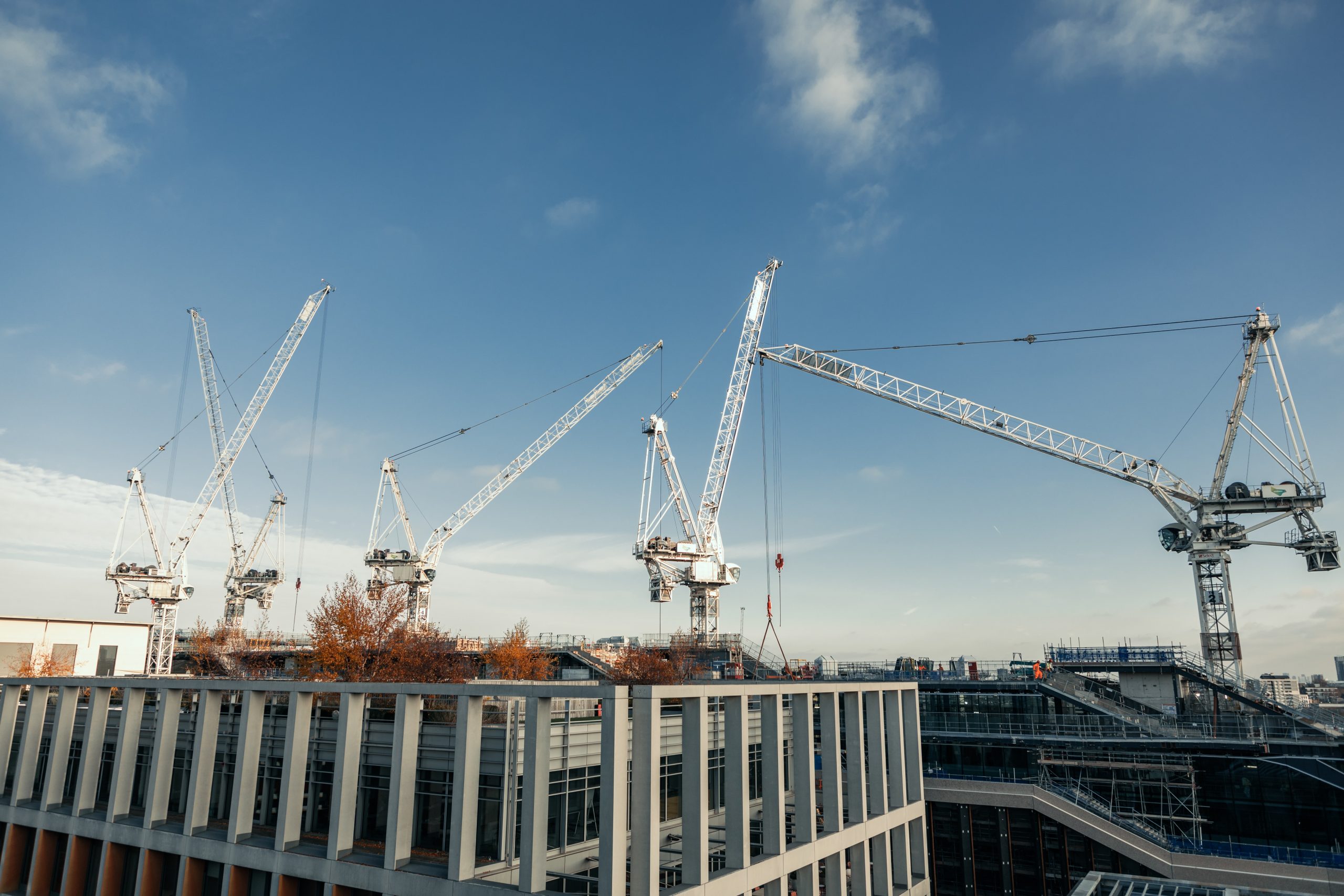Overview of the Construction Process
The construction process is an intricate and often complex procedure that begins with design considerations, extends to site preparation and encompasses all aspects of fitting and finishing. To ensure successful completion of a construction project, it is essential to pay attention to all components in the process.
This overview of the construction process explores the many elements that are necessary for its successful conclusion.
First and foremost, the integral role of design considerations must be highlighted in this overview. A successful construction project requires that architectural and engineering plans are thoroughly researched, discussed and agreed upon prior to the commencement of any manual works.
All plans and drawings should be checked for accuracy and completeness before launching headlong into the construction process. The aim of this step is to ensure that any potential difficulties are identified early and addressed in order to minimize the potential effect of costly mistakes during the build.
Following design considerations, site preparation is the next step in the construction process. This involves accurately establishing the building area, making the necessary foundations and excavation works.
It is also important to ensure that the environment of the build is free from any hazards, including loose material, falling objects and high–voltage electricity. During site preparation, it is important to survey the land thoroughly and make sure any risks are identified in order to minimize the likelihood of an accident occurring.
Design Considerations
Design considerations form a pivotal part of any construction process. Before any manual works can commence, architects and engineers need to ascertain their design plans thoroughly to ensure the project is constructed correctly and to the highest standards.
This stage of the process emphasizes the importance of taking into account all necessary details, while also understanding any restrictions or regulations that may impact the construction.
A critical aspect of design considerations is researching and understanding the local environment, climate and geography which can significantly influence the building process. Many mistakes are avoided when this stage is taken into account and can help to create a bespoke, cost–saving blueprint for meeting the specific requirements of a construction project.
Furthermore, these considerations must also account for potential safety risks that can occur during the actual construction, such as proximity to busy roads, or working at heights or in hazardous areas.
Other details to consider during the design phase are the technical requirements, sourcing the necessary materials and suppliers, budget restrictions, and providing a realistic timeline for the project. What‘s more, it is crucial to survey the environment and make necessary provisions so that the build is environmentally friendly.
Statistics and studies need to be taken into consideration in order to determine any noise pollution, wildlife destruction, or water runoff issues that could potentially arise. Taking all these aspects into account not only ensures a successful end result, but also helps to build a reputable and responsible reputation.
Site Preparation
The site preparation stage marks the official start of the construction process. This critical step of the build entails establishing the building area and setting the foundations for a successful end result. In order to ensure that the build complies with industry regulations and expectations, this stage needs to be conducted with great care and attention to detail.
One of the first tasks during the site preparation is to clear the area in order to begin the construction. This includes removing the topsoil and any obstructions which could affect the build. It is also important to make sure that the area is secure and without any potential hazards.
Once these preparatory steps are completed, the foundations can be put in place, ensuring that they are built to the highest standards and that they are securely held in place.
As part of the site preparation, the necessary utilities must be installed and connected. These include gas, electric, water and waste lines which need to be compliant with local authority regulations and Industry endorsed standards.
During this phase it is also important to assign the areas for car parking, cycle racks and any potential garden spaces, as well as to organize the drainage systems. Once these steps have been established and verified, the construction phase can begin.
Mounting and Assembly
Once the site preparation stage has been completed, the build can truly begin with the mounting and assembly of the different components that make up the structure. At this stage, sourcing and investigating the essential elements is a formidable task that can involve a lot of research, planning and careful consideration.
The most crucial element to consider when mounting and assembling a structure is to make sure that the right materials are sourced and used. This means that careful investigation must be performed to ascertain the purpose of the structure and to verify that they meet the essential standards.
Furthermore, during this phase, it is also important to consider environmental issues, such as the use of recycled materials, or the potential use of renewable energy sources.
Other key aspects to take into account during this phase are the health and safety of workers and the robustness of the components. As with the previous steps, all mounting and assembly work must adhere to the high industry standards and safety regulations.
This is paramount to ensure that the structure performs as intended and that all potential risks are minimized and avoided. Once these considerations have been accounted for, only then can the components be constructed.
Fitting and Finishing
The next step in the construction process is fitting and finishing. This phase is crucial for taking the building from its rudimentary form to its optimal end state and securing necessary permits for occupation.
To ensure successful completion of a construction project, this stage needs to be conducted methodically and with great attention to detail.
The fit and finish of any construction involves the installation of the various components, materials and fixtures required for the build. This includes the use of different types of concrete, plumbing, HVAC systems, electrical wiring, roofing and doors and windows, among many other elements.
Moreover, this is also the stage where architects and engineers go the extra mile in order to bring the structure up to a certain standard. This could involve implementing insulation and damp protection measures, further painting and plastering to complete the outer aesthetics, and any other improvements that may be necessary to fulfill the structure’s purpose.
Finally, a crucial aspect of the fitting and finishing step is to secure the necessary permits for occupation. Depending on where the construction is taking place, building regulations and compliance checks may be required.
This stage must also involve making sure that the structure is up to safety and health standards, which may involve a further inspection from authorities. Once all these aspects have been addressed, only then can the construction process move to its final step and the building can be occupied.
Health, Safety and Quality Checks
Health, safety and quality checks are integral to the success of any construction project. This step is designed to ensure that all aspects of the process conform to the industry–endorsed standards and regulations, as well as to guarantee that the structure serves its intended purpose.
The health and safety checks that take place during this step of the process are designed to safeguard workers and civilians alike, and need to be performed in a thorough and robust manner. This means that all potential hazards must be identified and assessed before, during and after the construction period, as well as compliant measures being taken to eradicate any risks.
Additionally, all equipment used must be adapted to the construction’s specific needs and must be regularly inspected and maintained in order to guarantee safety and security.
When it comes to quality checks, this step of the process requires the utmost attention to detail. All the materials used must be correctly installed, fused with the best practices, and verified for any faults that could result in structural failure in the future.
Quality checks also involve monitoring the works’ execution to guarantee that the building meets the client’s needs, as well as any restrictions or regulations stipulated in the initial design plans. Taken together, these different components ensure that the construction process is of the highest standard and that it results in a building that fulfills its intended purpose.
Inspection Sign–off
The inspection sign–off is a key part of the construction process, marking the official transitioning of a structure from an idea to a reality. This stage involves checking all parts of the build and making sure that all necessary permits and licenses have been acquired.
By sealing the construction at this stage, any issues that may have occurred during the process are identified and addressed, preparing the build for its eventual occupation.
During the inspection sign off phase, a series of rigorous tests and measurements are performed, including a full assessment of the health and safety conditions, a quality check of the components and materials used, and a thorough inspection of all works performed. To ensure an optimal result, all tests need to be conducted in a considerate manner, with a view to minimize any potential risks and issues.
Furthermore, the inspection sign–off phase involves attaining the necessary licensing and permits. Depending on the size and scope of the build, local authorities may be heavily involved in this process and must pre–approve the structure before it can be occupied.
It is also important to understand any limitations stipulated in the regulatory environment and to ensure that these are taken into account prior to the completion of the construction. By sealing the build at this point, the structure is certified safe and ready for occupation.
Celebrating the Completion
After the inspection and sign–off, the construction process is finally complete. At this juncture, it is a time to take stock of the accomplishments and to celebrate the successful ending of a long and often arduous process.
The completion of a construction is a monumental milestone that deserves celebration.
This involves recognizing the hard work and dedication of those involved in the project, as well as making sure that all parties are content with the end result. Celebrating the accomplishments not only pays homage to the process, but also allows time for reflection so that any potential issues that may have occurred can be addressed and remedied.
It is also important to note that the completion of a project involves tying up any loose ends that may remain, such as the filing required paperwork, dealing with any outstanding payments, and providing a comprehensive handover of the works.
By doing so, any potential issues that may arise after the construction is complete can be minimised, and the project can move on to the next stage of its lifecycle. When these tasks have been completed, it is then that the real celebration can begin.







